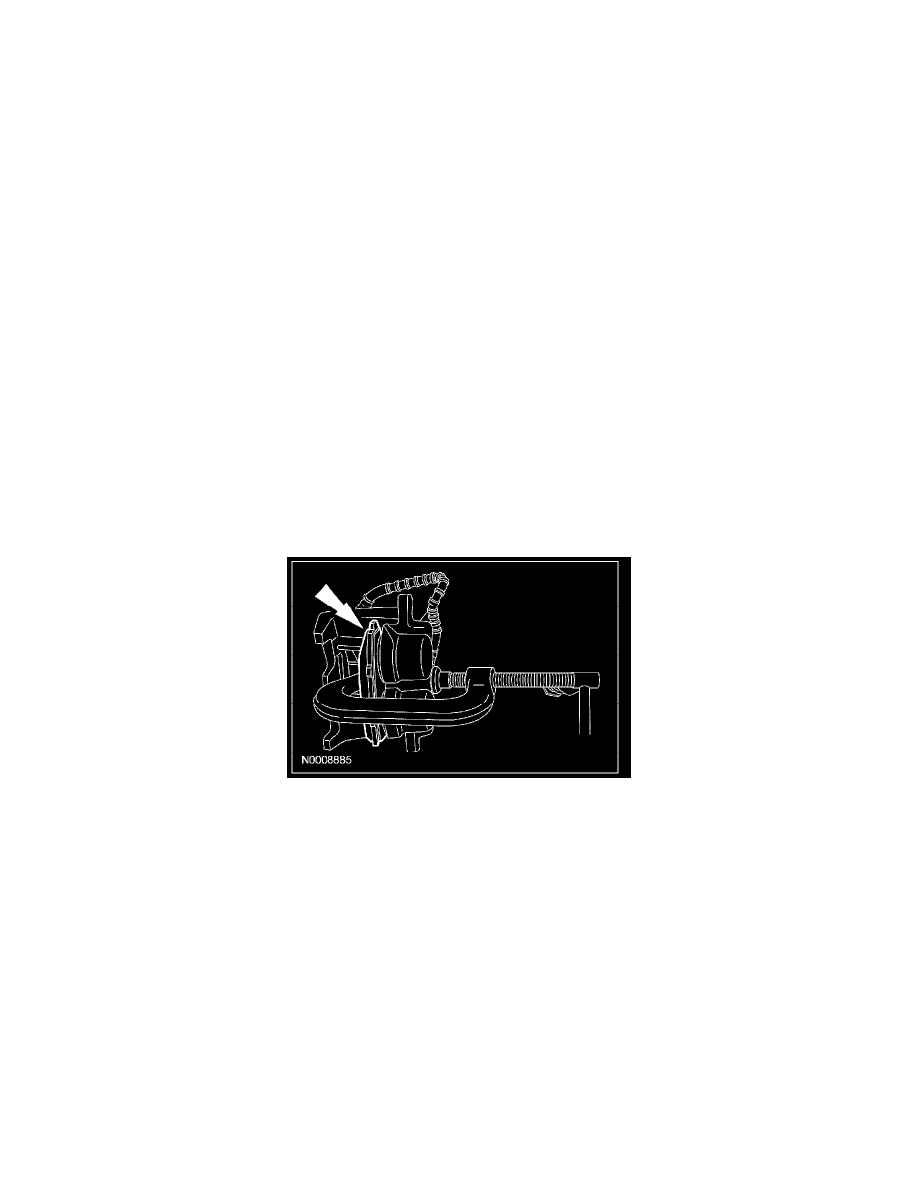Fusion FWD L4-2.3L (2008)

Failure to follow this instruction may result in uneven braking and serious personal injury.
CAUTION: Brake fluid is harmful to painted and plastic surfaces. If brake fluid is spilled onto a painted or plastic surface, immediately wash
it with water.
1. Check the brake fluid level in the brake master cylinder reservoir.
^
If required, remove the fluid until the brake master cylinder reservoir is 1/2 full.
2. Remove the wheel and tire.
3. CAUTION: Do not pry in the caliper sight hole to retract the pistons as this can damage the pistons and boots.
CAUTION: Do not allow the brake caliper to hang from the brake hose or damage to the hose can occur.
Remove the 2 brake caliper guide pin bolts and position the caliper aside.
^
Support the caliper using mechanic's wire.
4. Remove the 2 brake pad retraction springs.
5. Remove the brake pads, brake pad shims and stainless steel shims.
^
Inspect the brake pads and shims for wear or contamination.
6. Remove the brake pad slides.
7. Remove the 4 brake pad slide clips.
Installation
1. Install the 4 brake pad slide clips.
2. CAUTION: Protect the piston and boots when pushing the caliper piston into the caliper piston bores or damage to components may
occur.
CAUTION: Make sure that the caliper guide pin boots are fully seated or damage to the caliper guide pin boots can occur.
If installing new brake pads, using a C-clamp and a worn brake, compress the disc brake caliper pistons into the caliper.
3. Install the brake pad slides.
4. Apply grease that is supplied to the pad backing plate and shims in the areas indicated.
1
Apply grease to the back of the brake pad.
2
Apply grease to the inner piston side stainless steel shim.
3
Apply grease to the outer stainless steel shim.
